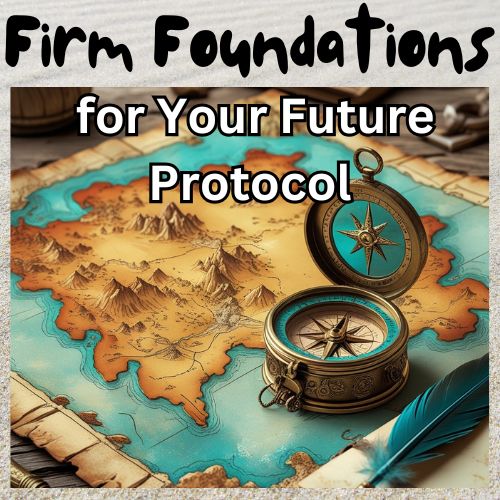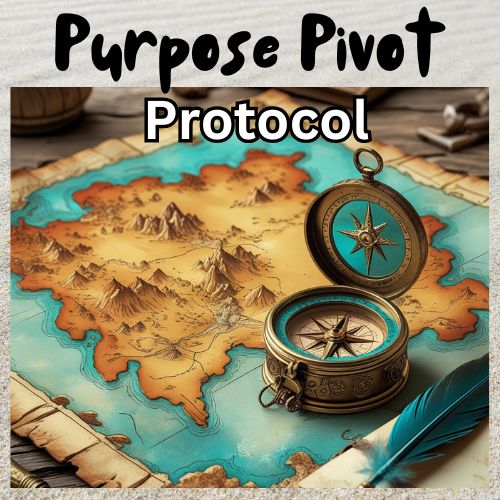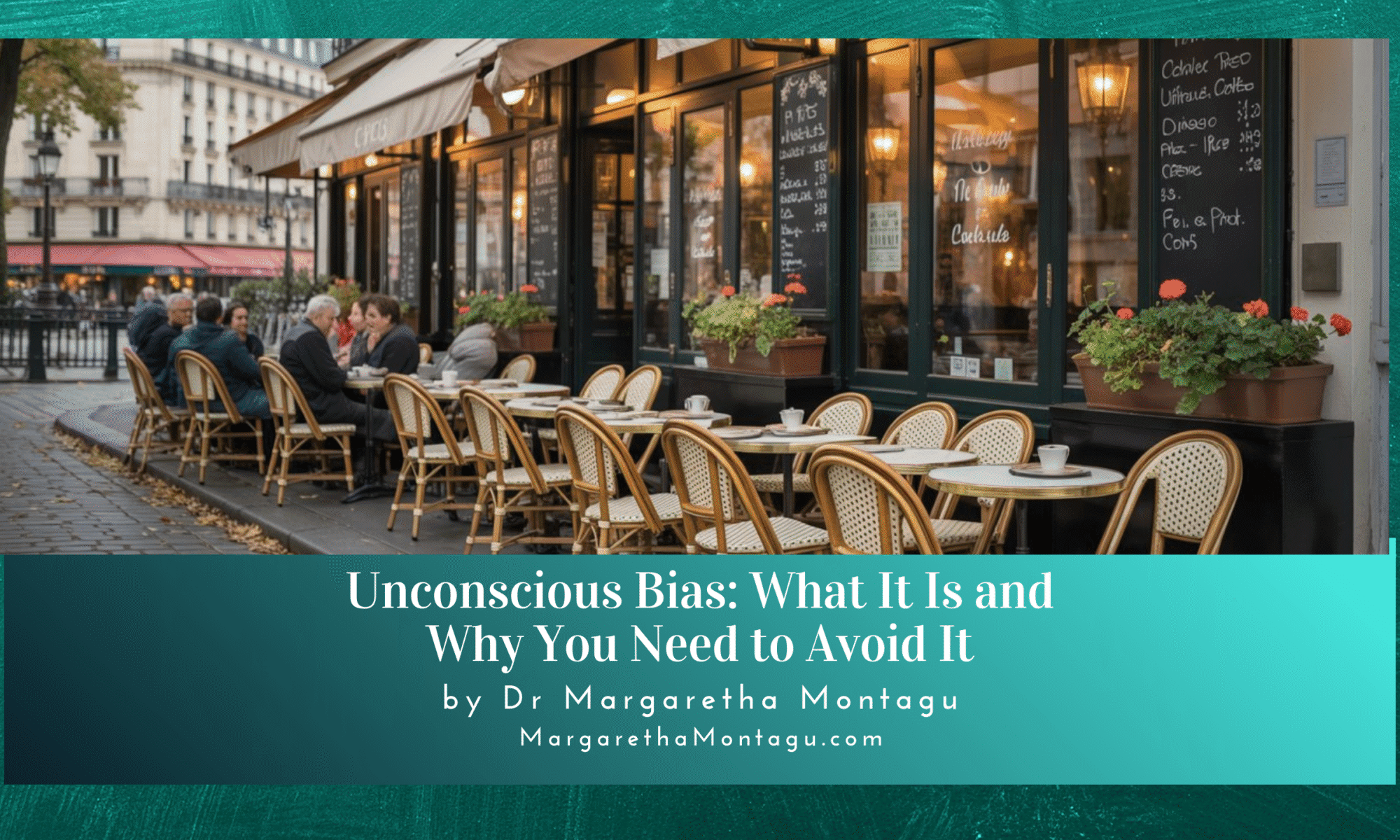Your brain is brilliant at making lightning-fast decisions, but sometimes it gets a bit too clever for its own good. Unconscious bias is the mental shortcut that whispers misleading stories in your ear, especially when you’re navigating major life changes. This article explores what’s happening in your remarkable brain, why it matters more than you think, and how to gently challenge those automatic assumptions before they derail your next chapter. Whether you’re reinventing yourself at sixty or wrestling with a career crossroads, understanding unconscious bias might just be the kindest gift you give yourself.
Five Key Takeaways
- Unconscious bias operates below your awareness, making snap judgements based on stereotypes rather than facts, particularly affecting people trying to cope with life changes.
- Age bias is one of the most pervasive forms of unconscious bias, often preventing talented people from pursuing new ventures after fifty.
- Your brain’s predictive system creates biases as energy-saving shortcuts, but these can become obstacles during life crises.
- Simple awareness practices can significantly reduce the impact of unconscious bias on your decision-making.
- Storytelling and mindful reflection help identify and challenge hidden biases in ourselves and others.
Introduction: The Invisible Hand on Your Shoulder
Here’s something nobody tells you about major life transitions: just when you need your brain to be most flexible, most open, most creative, it doubles down on old patterns like a stubborn terrier refusing to drop a bone. That’s unconscious bias at work, and it’s probably whispering unhelpful nonsense in your ear right now.
Unconscious bias, those automatic mental shortcuts we all carry, becomes particularly mischievous during life transitions such as retirement, career changes, or embarking on new ventures. These hidden prejudices operate beneath conscious awareness, influencing decisions about ourselves and others based on stereotypes rather than reality. The fascinating, slightly unsettling truth is this: the very brain that got you this far can become your biggest obstacle when you’re trying to write your next chapter.
But here’s the beautiful part, you can learn to spot these biases, question them, and choose differently. And that’s precisely what this article will help you do.
The Story of Henri’s Coffee Shop
Henri Beaumont had rehearsed his pitch seventeen times in the mirror of his seventh arrondissement apartment, each delivery more polished than the last. At sixty-seven, with silver hair that caught the autumn light streaming through his windows, he’d finally done what he’d dreamed about for forty years: left his position as a corporate insurance executive to open a speciality coffee roastery in the Marais.
The aroma of freshly ground beans filled his kitchen as he practised, his hands, still strong despite the slight tremor of nervous energy, gesturing with the passion he’d kept bottled up through decades of actuarial tables and risk assessments. His daughter had helped him create a business plan. His wife had supported his decision to cash in part of his pension. Everything was aligned, except for one crucial element: startup capital.
The bank appointment was at two o’clock on a Tuesday, the kind of crisp October afternoon when Paris feels like a watercolour painting coming to life. Henri arrived fifteen minutes early, wearing his best navy suit, the one that made him feel confident and capable. He carried a leather portfolio containing five years of financial projections, market research on the growing speciality coffee movement in Paris, and letters of intent from three restaurants interested in his beans.
The loan officer, Madame Leclerc, couldn’t have been more than thirty-five. Her handshake was firm, professional, but Henri noticed something shift in her expression the moment she registered his age on the application form. It was subtle, a micro-expression that lasted perhaps half a second, a slight tightening around the eyes, a barely perceptible pull at the corner of her mouth.
“Monsieur Beaumont,” she began, her voice taking on a tone Henri recognised instantly, the same tone people used when explaining technology to his mother, “starting a business at your stage of life is quite… ambitious.” The word ‘ambitious’ landed like a stone in still water.
Henri’s stomach clenched. He could taste the metallic tang of disappointment already forming on his tongue. The office suddenly felt smaller, the air heavier. He watched her manicured fingers, painted a tasteful burgundy, flip through his proposal, barely pausing on the pages he’d agonised over for months.
“Have you considered,” she continued, not quite meeting his eyes, “that the coffee industry is extremely competitive? The physical demands of running a roastery, the long hours on your feet, the technology involved in modern coffee equipment…” She let the sentence trail off, the implication hanging in the air like cigarette smoke.
Henri felt heat rising up his neck, not from anger but from something worse: self-doubt. Was she right? The question wormed its way into his confidence. He could hear his own heartbeat, feel the slight dampness of his palms against the leather portfolio. Outside the window, he watched a young couple laughing, carrying shopping bags, their whole lives ahead of them.
But then something else rose within him, a memory of teaching his granddaughter to ride a bicycle the previous summer, running alongside her for hours without tiring. He thought of the marathon he’d completed just six months earlier, the coffee cupping sessions where his palate consistently outperformed people half his age, the software he’d mastered to model his business finances.
“Madame Leclerc,” Henri said, his voice steady, “I’ve spent forty years managing risk. I know exactly what I’m getting into.” He opened his portfolio, the crisp sound of turning pages filling the silence. “According to research from Duke University, entrepreneurs over fifty-five have significantly higher success rates than younger founders. We understand our customers better, we have established networks, and we’ve learned from decades of watching others succeed and fail.”
The air in the room shifted. Henri pulled out a photograph, the glossy paper catching the light. It showed him at origin, visiting coffee farms in Colombia, his face tanned and smiling, surrounded by farmers who’d agreed to supply his roastery. “This isn’t a retirement hobby,” he said quietly. “This is my life’s work, finally beginning.”
I share Henri’s story often in my storytelling circles, both online and at my retreats in France. It never fails to spark recognition, that collective intake of breath when people realise they’ve been on both sides of this equation: experiencing age bias and, if we’re honest, harbouring it themselves. Henri eventually secured his loan from a different institution, and his roastery opened the following spring. But the real transformation happened in that bank office, when he chose to see the unconscious bias for what it was and refuse to let it become his internal narrative.
Understanding Unconscious Bias: What’s Really Happening
Unconscious bias, also called implicit bias, refers to the attitudes and stereotypes that affect our understanding, actions, and decisions in an unconscious manner. These biases operate automatically, triggered by our brain’s tendency to categorise people and situations rapidly based on limited information.
The Science Behind the Shortcuts
Your brain processes approximately eleven million bits of information every second, yet your conscious mind can only handle about forty bits. To manage this overwhelming flood, your brain creates shortcuts, mental models that allow for quick decision-making without exhausting cognitive resources. These shortcuts, whilst efficient, often rely on stereotypes, cultural conditioning, and past experiences that may not apply to current situations.
Research published in medical and psychological journals confirms that everyone possesses unconscious biases, regardless of their conscious values or intentions. Even individuals who consciously reject prejudice can harbour implicit biases that contradict their stated beliefs. This isn’t a moral failing, it’s a feature of human cognition, albeit one that requires active management.
Why Life Transitions Amplify Bias
During major life changes, uncertainty and stress heighten, making people more likely to rely on automatic thinking patterns. When you’re navigating retirement, career change, or personal reinvention, you’re already managing significant cognitive load. Your brain, seeking to conserve energy, defaults to familiar patterns and stereotypes.
This creates a double challenge. Not only do others project biases onto you based on your age, background, or circumstances, but you also internalise biases about yourself. You might question your capability, relevance, or worthiness of new opportunities, not because the evidence supports these doubts, but because unconscious bias has become your inner critic.
Common Types of Unconscious Bias
Age bias affects people across the lifespan but becomes particularly problematic for those over fifty seeking new opportunities. Despite research showing that older entrepreneurs achieve higher success rates, they face significant barriers accessing capital, employment, and training. Assumptions about energy levels, technological competence, and adaptability often mask the genuine advantages of experience, wisdom, and established networks.
Confirmation bias leads us to seek information that confirms existing beliefs whilst dismissing contradictory evidence. If you believe you’re too old to start something new, you’ll notice every story of youthful success whilst overlooking examples of later-life achievement.
Affinity bias draws us towards people similar to ourselves, potentially limiting opportunities and perspectives during transitions. This bias can prevent valuable mentorship relationships, business partnerships, or friendships that cross demographic boundaries.
Practical Strategies for Recognising and Reducing Bias
Cultivate Mindful Awareness
The SPACE² model, an evidence-based framework for managing unconscious bias, emphasises six key strategies: slowing down, perspective-taking, asking yourself questions, cultural intelligence, exemplars, and expand. Slowing down your decision-making process creates room for reflection rather than automatic response.
When facing important decisions during life transitions, pause before acting. Notice your immediate reactions and examine them with curiosity rather than judgement. Ask yourself: what assumptions am I making? What evidence supports or contradicts these assumptions? Whose perspective am I missing?
Practice Perspective-Taking
Actively seek experiences and stories that challenge your existing mental models. If you’re worried about age limiting your opportunities, research successful later-life entrepreneurs like the eighty-six-year-old editor building her brand on Fiverr or the eighty-one-year-old who secured patents for his refrigeration system. These examples aren’t outliers, they represent a significant trend of capable, creative people reimagining work after traditional retirement.
Perspective-taking also means examining how your own biases might affect others. Have you made assumptions about younger colleagues, people from different backgrounds, or those whose life paths differ from yours? Recognising your own biases reduces their power whilst building empathy.
Question Your Stories
In my storytelling circles, participants discover that the narratives they tell themselves about their capabilities and worth often contain hidden biases. These internal stories, shaped by culture, media, and past experiences, can become self-fulfilling prophecies if left unexamined.
Try this exercise: write down a belief you hold about your current life transition. Then challenge it. What evidence contradicts this belief? Who successfully navigated a similar change despite facing comparable or greater obstacles? How might you reframe this belief to serve rather than limit you?
Build Cultural Intelligence
Cultural intelligence involves developing awareness of how different backgrounds, generations, and experiences shape perspectives and assumptions. During life transitions, expanding your cultural competence opens possibilities you might otherwise miss.
Seek diverse input when making decisions. Consult people from different age groups, industries, and backgrounds. Their perspectives can reveal blind spots and opportunities invisible from your vantage point.
Find and Become Exemples
Identify role models who’ve successfully navigated transitions similar to yours. Their existence challenges stereotypical thinking and provides practical roadmaps. Equally important, recognise that your journey can inspire others facing similar crossroads.
Research confirms that exposure to counter-stereotypical exemplars reduces implicit bias over time. The more examples you encounter of people defying limiting assumptions, the weaker those assumptions become.
Further Reading
“Blindspot: Hidden Biases of Good People” by Mahzarin R. Banaji and Anthony G. Greenwald
This seminal work by the creators of the Implicit Association Test explores how unconscious bias operates even in people committed to fairness and equality. I chose this book because it provides scientific rigour without sacrificing accessibility, offering readers both understanding and practical tools. The authors demonstrate how implicit biases develop, how they influence behaviour, and most importantly, how awareness can begin to counteract their effects. For anyone navigating life transitions, this book offers the foundation for recognising hidden biases that might otherwise sabotage new beginnings.
“The Leader’s Guide to Unconscious Bias: How to Reframe Bias, Cultivate Connection, and Create High-Performing Teams” by Pamela Fuller
Fuller’s practical approach makes this book invaluable for anyone reinventing themselves professionally. The book emphasises that unconscious bias isn’t about blame but about understanding and growth. I selected this because it offers concrete strategies for reframing bias, building inclusive thinking, and making better decisions under uncertainty. The focus on connection and high performance makes it particularly relevant for people starting new ventures or building new professional identities during transitions.
“Thinking, Fast and Slow” by Daniel Kahneman
Whilst not exclusively about unconscious bias, Kahneman’s exploration of the two systems of thinking, fast (intuitive) and slow (deliberate), illuminates how biases form and persist. I included this book because understanding your cognitive architecture helps you recognise when you’re operating on autopilot versus making considered choices. During major life changes, knowing how your mind works becomes a superpower. Kahneman’s accessible writing transforms complex neuroscience into practical wisdom applicable to everyday decisions.
Voices
“Margaretha’s storytelling circles opened my eyes to biases I didn’t even know I had, especially about my own capabilities after redundancy. Hearing others’ stories and sharing my own helped me see that the limiting voice in my head wasn’t truth, it was conditioning. Within three months of attending the online circle, I’d launched the consulting practice I’d been ‘too old’ to start. That shift in perspective was everything.”
— J.M., Storytelling Circle Participant
Five Sharp FAQs
Q: Can unconscious bias really be eliminated completely?
Probably not entirely, but that’s not the goal. The aim is awareness and management rather than elimination. Research shows that acknowledging biases and actively working to counteract them significantly reduces their influence on decisions and behaviour. Think of it like learning to notice when you’re hungry rather than eating unconsciously, you can’t eliminate hunger, but you can make better choices about how and when you respond.
Q: How can I tell if I’m experiencing bias from others or if I’m being oversensitive?
Trust your instincts whilst seeking patterns rather than focusing on isolated incidents. If multiple interactions leave you feeling dismissed, underestimated, or stereotyped, that’s data worth examining. Document specific behaviours and statements rather than vague feelings. Also consider: would this same treatment apply to someone from a different demographic? If the answer is probably not, bias is likely at play.
Q: What if recognising my own biases makes me feel guilty or ashamed?
Guilt indicates you’re human, not flawed. Everyone possesses unconscious biases because everyone’s brain uses shortcuts. The goal isn’t moral perfection but conscious evolution. Shame keeps biases hidden; curiosity transforms them. Approach your biases with the same gentle kindness you’d offer a friend learning something new.
Q: How do I challenge age bias in professional settings without seeming defensive?
Lead with evidence rather than emotion. When assumptions surface, calmly present data, examples, or your own track record. Henri’s approach in the story works well: acknowledge the concern, then reframe it with facts. Research supports that older entrepreneurs often outperform younger ones, so you’re not being defensive, you’re being accurate. Confidence grounded in evidence rarely reads as defensiveness.
Q: Can mindfulness practices genuinely reduce unconscious bias?
Yes, research increasingly supports this connection. Mindfulness strengthens the capacity to notice automatic thoughts without immediately acting on them, creating space for more deliberate responses. Regular mindfulness practice enhances self-awareness, reduces stress-driven reactivity, and increases cognitive flexibility, all factors that help manage unconscious bias. It’s not magic, but it is measurably effective.
Conclusion: Your Next Chapter, Unbiased
Understanding unconscious bias isn’t about achieving perfection or eliminating every automatic thought your brain produces. It’s about developing the awareness to notice when those thoughts are leading you astray and the courage to choose differently. During major life transitions, when everything feels uncertain and your confidence might waver, recognising and challenging bias, both in yourself and others, becomes an act of self-compassion and wisdom.
The stories you tell yourself matter profoundly. They shape not only how you see yourself but what you believe is possible. When those stories are contaminated by unconscious bias, they limit your next chapter before it even begins. But when you learn to question assumptions, seek diverse perspectives, and trust evidence over stereotypes, you reclaim authorship of your life.
Your age, your history, your unique path, these aren’t obstacles to reinvention. They’re advantages, if you refuse to let bias convince you otherwise. Every transition offers an opportunity to shed old stories and step into new possibilities. The question isn’t whether you’re capable of writing your next chapter. It’s whether you’ll let unconscious bias hold the pen.
Walk the Camino at any Age: A Retreat for Life’s Crossroads
Sometimes the most powerful way to recognise and release unconscious bias is to step away from the noise, both external and internal, and walk yourself into clarity. That’s precisely what happens on my Camino de Santiago Crossroads retreats in the sun-blessed southwest of France.
Imagine spending seven days walking through noble vineyards, wildflower meadows, and quiet ancient forests, each step creating space for the stories you’ve been carrying to surface and transform. At Esprit Meraki, my 200-year-old farmhouse nestled in lush meadows, you’ll experience a carefully crafted blend of walking meditation, mindfulness practices for stress management, and my signature storytelling circles where bias loses its grip and authentic possibility emerges.
These retreats aren’t about pushing through or proving yourself. They’re about releasing the weight of others’ expectations and your own unconscious limitations. Through daily walks on the legendary Camino, micro-meditations you can take home, and evening storytelling circles, you’ll discover which narratives serve your next chapter and which ones need to be left by the wayside.
Previous guests describe the experience as transformative, returning home with laser-sharp clarity about their path forward and the confidence to walk it regardless of what others assume. Whether you’re navigating retirement, career reinvention, or any significant life transition, the combination of movement, mindfulness, and shared stories creates the perfect environment for seeing beyond bias into what’s truly possible.
The retreats run from March through November, welcoming small groups that allow for genuine connection and personal attention. You’ll be supported, nourished, and given the time and space to reconnect with your authentic self whilst walking one of the world’s most meaningful pilgrimage routes. Click Here to discover how a week in France might just change everything.









A reflection for you: What story about yourself have you been accepting as truth that might actually be unconscious bias in disguise? What would become possible if you questioned it?

Firm Foundations for Your Future Protocol – a fast-paced, high-impact, future-focused course that facilitates the construction of identity-shaping stories about your future self so that you can make the changes needed to avoid having to go through big life changes again and again—without needing to process your past in depth and in detail.

The Purpose Pivot Protocol – drawing inspiration from the Camino de Santiago, this transformative course guides you through a proven framework to recalibrate your authentic purpose and create a meaningful and fulfilling next act. Get immediate access

“I am an experienced medical doctor – MBChB, MRCGP, NLP master pract cert, Transformational Life Coach (dip.) Life Story Coach (cert.) Stress Counselling (cert.) Med Hypnotherapy (dip.) and EAGALA (cert.) I may have an impressive number of letters after my name, and more than three decades of professional experience, but what qualifies me to excel at what I do is my intuitive understanding of my clients’ difficulties and my extensive personal experience of managing major life changes using strategies I developed over many years.” Dr M Montagu

